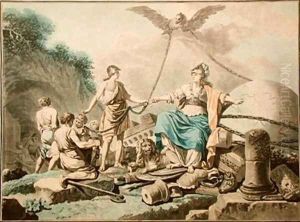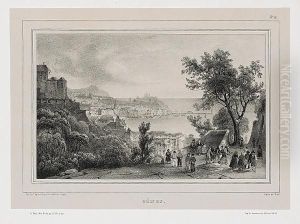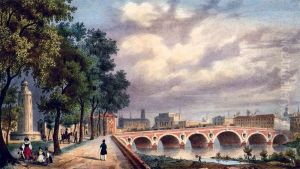Jean-Baptiste Chapuy Paintings
Jean-Baptiste Chapuy was a French artist, primarily recognized for his work as an engraver and painter during the late 18th century and the early years of the 19th century. Born in 1760, Chapuy's career unfolded during a turbulent period in French history, marked by the end of the Ancien Régime, the French Revolution, and the onset of the Napoleonic era. Despite the upheavals of his time, Chapuy managed to carve out a niche for himself within the artistic community, contributing to the visual culture of his era through his detailed and often exquisite engravings and paintings.
Chapuy's work is characterized by its meticulous attention to detail and its adherence to the styles and sensibilities of the Neoclassical movement, which was predominant during his lifetime. This movement sought to revive the simplicity, symmetry, and elegance of ancient Greek and Roman art, standing in contrast to the more ornate and elaborate Baroque and Rococo styles that preceded it. Chapuy's engravings often depicted architectural subjects, including notable buildings and monuments, both contemporary and historical. These works were not only appreciated for their artistic merit but also served as valuable records of architectural heritage, some of which has since been lost or altered.
In addition to his architectural engravings, Chapuy also produced portraits and historical scenes. These works, while perhaps less well-known than his architectural pieces, further demonstrate his versatility as an artist and his ability to capture the essence of his subjects with accuracy and sensitivity. Despite the acclaim he received for his craftsmanship and artistic skill, Chapuy's life and career were cut short by his premature death in 1802, at the age of 42.
Jean-Baptiste Chapuy's legacy is preserved in the collections of various museums and institutions, where his works continue to be studied and appreciated for their contribution to the Neoclassical movement and their documentation of an important period in French history. Though his life was brief, his artistic output left an indelible mark on the world of art, making him a figure of enduring interest to historians, scholars, and art enthusiasts alike.


